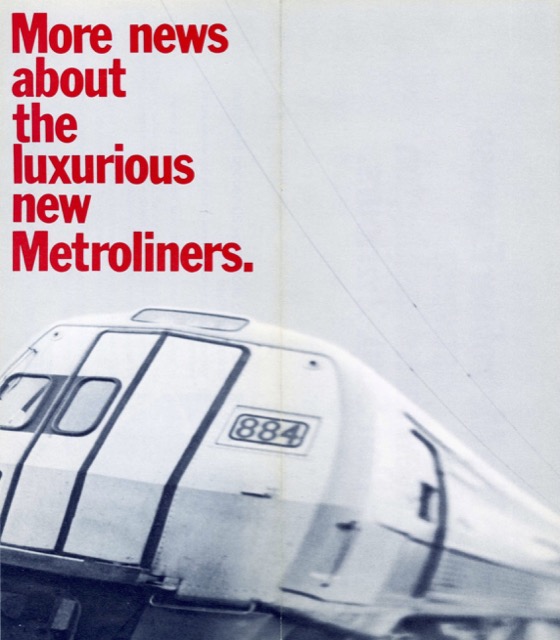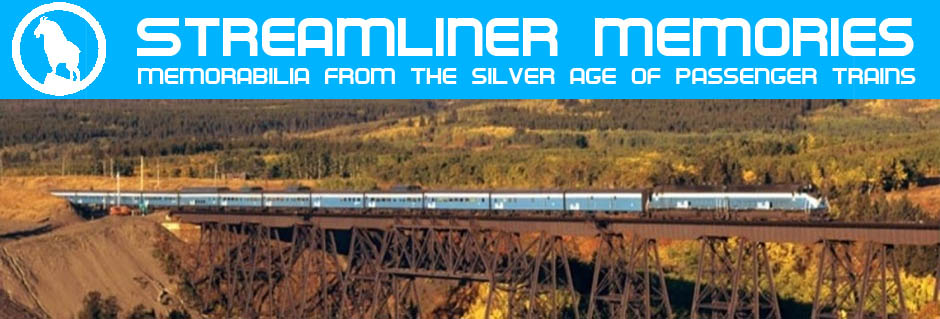In the early 1960s, Americans were running scared that other countries were getting ahead of them in various technologies. Russia beat the United States to outer space with Sputnik in 1957. Kennedy won the White House by claiming that there was a “missile gap” between the USSR and USA. So, when Japan took the crown of having the fastest trains in the world from the United States in 1964, some worried that this was another technological race we were losing.
 Click image to download a 1.0-MB PDF of this brochure.
Click image to download a 1.0-MB PDF of this brochure.
Rhode Island Senator Claiborne Pell responded to this latest technological defeat by convincing Congress to pass the High Speed Ground Transportation Act of 1965, which funded the development and construction of high-speed trains between Boston and Washington. The Boston-New York portion, which was not entirely electrified, was served by United Aircraft TurboTrains. The New York-Washington portion was served by the Metroliners.
Both trains were capable of going faster than the Japanese bullet trains (which initially had a top speeds of just 130 mph), but in practice were kept to top speeds of 110 to 120 mph. This brochure indicates the non-stop Metroliners covered the 226 miles from New York to Washington in 2-1/2 hours, faster than today’s Acela (which makes at least five stops), while the Metroliners that made five intermediate stops required 2 hours and 59 minutes, slightly longer than today’s five-stop Acela.
This brochure also announces that Penn Central would soon install computerized ticketing system that would allow passengers to buy tickets in 20 seconds. This system was installed in August, 1969, so the brochure dates to shortly before that month.
As far as I know, the federal government had not done anything to promote intercity passenger trains since the 1930s, when it gave grants to the Baltimore & Ohio and Gulf, Mobile & Northern to buy their first streamlined trains. The 1965 law suggested that the federal government would not let passenger trains die, and thus set a precedent for creating Amtrak in 1970.
